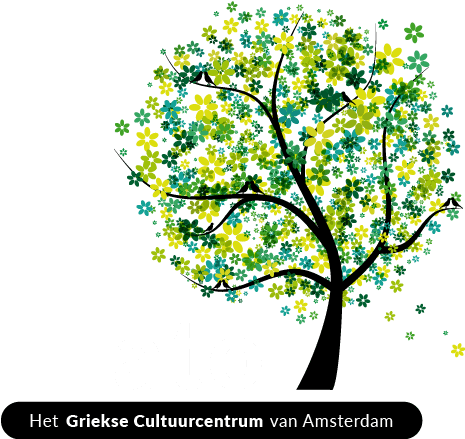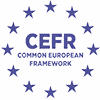No products in the basket.
Golden donkeys vs economic crisis!
At a time when the only “horses” we know are those of our car engine, it’s hard for someone to remember the humble “donkey”.
His scientific name is Equus asinus and it is clearly an animal that up till now is known for its character. For many is a symbol of humility but often – at least linguistically – is identified with stubbornness or whims. This is the main reason it is used in infinite linguistic expressions.
He can live up to fifty years and has a much higher durability to hard work, heat, disease, and hunger than the horse. He is very patient and lives many more years than a horse.
The social & economic role of the donkeys in the past, present & … future

Yesterday
From antiquity to the present, it was a companion to man. In particular in Greece, it was the most important “tool” in a mainly rural society. Beyond that, a donkey was an asset and a daily companion in all the housework. So it was very normal to end up to be considered a family member. With fewer rights, of course, but with special care and appreciation.
And besides a place in the barn, there were more than few times that he had a place in big celebrations. If we think for example about Christmas festive bread, which was decorated with symbols for all the things that were important in the life of the family. Among these things, often the humble donkey was to be seen.
But things changed. So did society. The agricultural machines, cars and tractors … sent the donkeys to the “unwanted cart”. On the other hand, the extremely tiring jobs sent people to the cities where they felt they could ensure a better life.
So it is no coincidence that in 1950 there were 508,000 of these sympathetic four legged animals in Greece, which in the next 5 years became 95,000 and today are less than 16,000 (as it is estimated).
Learn more about the unknown side of Greece and your beloved destinations.
… and today
Though their exact number remains a mystery, what we can say with absolute certainty is that almost half of them live on the Peloponnese. The rest of them are to be found on some of the Aegean islands. Among these, we have to calculate those animals that have escaped from the traditional work model and they have become slaves in the tourism industry.
Donkey workers in the Tourism industry
So, who could even imagine that this would be much harder than the life they once had in a farm!
The most characteristic is the case of the little donkeys that during the summer months steadily go up and down the 520 steps of the island of Santorini. For 8 to 10 hours, they transport the tourists of the big cruise ships from the harbour to the centre of the island (Thira) and back again, under the hot Mediterranean sun, without enough water, rest or breaks. Under these hard conditions and with the stress of dozens of unknown people who surround them and photograph them, it is not at all strange that there are cases in which they have become furious and have created accidents.
What floods the internet and the international press is not a product of imagination, nor a demonstration of a bad behaviour of dangerous animals. It is an alarm that comes to remind us that something in this whole model is not right.
And although in Greece the present seems to be “coloured” with rather negative colours, there are other countries which already open very different horizons …
Gold “donkeys business” in EU

Donkey milk, one of the most complete super foods
In some other countries, historical references according to which Queen Cleopatra used to have baths in donkey’s milk, and also reports that women used it for their skin care and other such strange things, seem to be evaluated more carefully.
More than that, next to the historical references there is also the scientific knowledge that confirms that the milk of these patient people’s friends is one of the most modern and complete super foods.
– It is closer than any other natural food to the breast milk,
– it does not create allergic reactions,
-it is rich in lactose and
-has 60 times higher vitamin C content.
– In addition, it contains few proteins and oily fat and
– helps to treat respiratory problems in newborns.
Products made of … gold
The only modern veterinary unit that has decided to make the most of these scientific findings is the one of Olivier Denis in Chateau des Mottes, in Belgium. The unit consists of 100 animals, of the “Arcadian” breed, which come from Greece, Italy and Spain.
The plant produces a range of products such as milk, shower gel, candies, soap and more. Milk is only available on the Belgian market, while other products are exported to France, Switzerland, Germany and Canada.
The main factor which determines the high price of these products is their beneficial properties, as well as the limited amount of their raw material (donkeys’ milk) on the market. If this is combined with the fact that about 25 litres of milk is required for one kilo of cheese, then it is quite understandable why the final sales price reaches €1,000 per kilo and is available only upon request.
So, maybe it is high time for all the donkeys to say .. “cheese” !
And if this is just one of the different aspects regarding the position that the donkeys could have in the modern economy, another one (perhaps the most interesting one) gives them the role of … a psychiatrist!
Donkey-doctors
The whole project is called “asinotherapy / donkey assisted therapy” and has to do with specially adapted programs which bring together children with movement or behavioural problems, emotional or mental disorders, autism … with the patient donkeys. Psychologists and other researchers who have been working for years on this subject have been giving valuable testimonies about the therapeutic effects of such an alternative approach.
Until now, programs with dolphins have been widely known. Still, the calm nature of the sympathetic animals, their communicative and patient character, their playful mood, but also their physical characteristics make them more suitable than horses for such programs.
The reality for donkeys in Greece today
Maybe the common history of the Greeks with these humble animals was long in the past. But the entrance in a new era, in which the roles are completely changed, is something new.
The first donkey farms have already appeared which have as a goal to produce milk under exemplary conditions. This milk is sold as a product or as raw material for the manufacture of related products.
At the same time, the legal framework around the new sector is shaped.
If you still feel a nostalgia for these cute mammals, or if you want to spend some pleasant and fruitful moments with your children, until you get the boat that will probably bring you to the final destination of your holiday in Greece, do not hesitate to go just a few kilometres (14) away from the national airport Eleftherios Venizelos. There you will not find the mythical Narnia, nor Neverland and Peter Pan. But you will find the Donkey-Land or in Greek … Gaidourochora.
New Greek courses start in September.
Find the best for you here.

Gaidourochora
Gaidourochora is not just a place of recreation, nor a commercial trick at a time when many are looking for smart ideas to exploit. It is a “model centre” which hosts 9 donkeys, in ideal conditions. It is a visiting farm and the ambitious project of two sensitized people.
The purpose of the farm is to re-introduce to its visitors a rather misunderstood animal, to rescue it from extinction and, of course, there is the healing part through an experiential program.
In the program there are many references to Greek mythology, walks to nature, references to tradition and other interesting facts.
Are you just curious? Or sensitized?
Then a visit to Gaidourochora might be enough to make you think about it better before calling someone: “donkey.”
© Lato,
Het Griekse Taal– & CultuurCentrum van Amsterdam




